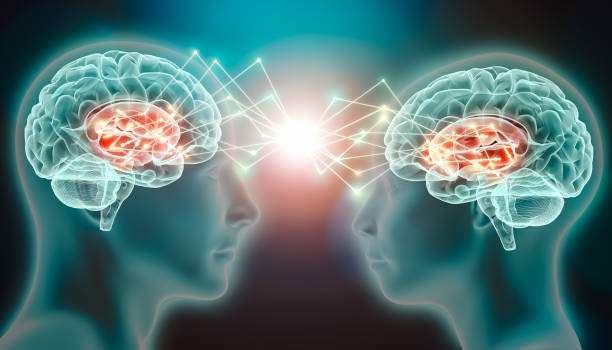Music is one of the most universal human experiences. It transcends cultures, languages, and generations, touching people in ways that words alone cannot. Whether it is the rhythm of a drum, the harmony of a choir, or the melody of a single violin, music moves us emotionally, shapes our memories, and even alters our perception of time and self. Yet, despite its ubiquity and power, the question remains: why do we love music so deeply?
To understand this, we must look into the psychology, neuroscience, and evolution of music. Scientists, philosophers, and artists alike have pondered music’s role in human life for centuries. Modern research reveals that music is not merely entertainment—it is a profound expression of the human mind, rooted in biology, emotion, and social connection.
The Evolutionary Origins of Music
The love of music is not a modern invention. Archaeological evidence suggests that humans have been making music for at least 40,000 years, possibly much longer. Ancient bone flutes, percussion instruments, and cave paintings depicting dancing figures indicate that music has been part of human life since the dawn of culture. But why did it evolve?
There is no single answer, but several theories offer insights. One possibility is that music evolved as a form of social bonding. Long before complex language, rhythmic movements and vocalizations may have helped early humans coordinate group activities such as hunting or rituals. The synchrony of rhythm could have strengthened cooperation and unity, creating a sense of belonging.
Another theory proposes that music evolved as a byproduct of our capacity for speech and emotional communication. Human vocalizations, like laughter, crying, or sighing, are inherently musical in pitch and rhythm. Over time, these expressive sounds may have become structured and intentional, giving rise to proto-music.
Charles Darwin suggested that music may have originally served a role in sexual selection, similar to bird songs—individuals who could produce pleasing sounds might have been perceived as more attractive or capable. While this idea remains speculative, it highlights music’s deep connection to emotion, display, and social signaling.
Whatever its evolutionary roots, music has become a unique human adaptation. It stimulates nearly every region of the brain, affecting emotion, memory, movement, and even physiological states such as heart rate and hormone levels. This integration across neural systems may explain why music feels so powerful and universal.
The Brain and the Biology of Music
When we listen to music, the brain becomes a symphony of activity. Unlike most stimuli, which activate isolated regions, music engages multiple interconnected networks simultaneously. The auditory cortex processes pitch, tone, and rhythm; the motor system anticipates beats; the limbic system triggers emotional responses; and the prefrontal cortex interprets meaning and expectation.
One of the key players in our enjoyment of music is the neurotransmitter dopamine. This “feel-good” chemical is released in anticipation of and during musical pleasure, similar to how it functions in response to food, love, or addictive substances. Studies using brain imaging have shown that dopamine levels rise just before a musical climax, particularly when a melody leads the listener to expect a certain resolution. When that expectation is fulfilled—or cleverly violated—the listener experiences a rewarding surge of emotion.
Music also affects the brain’s reward circuitry, particularly the nucleus accumbens and ventral tegmental area, regions associated with motivation and pleasure. This explains why a favorite song can make us feel euphoric, energized, or deeply moved. Even when we know a piece by heart, our brain anticipates familiar patterns and receives small bursts of dopamine with each satisfying repetition.
Furthermore, the brain’s motor areas are inherently linked to rhythm. When we tap our foot or nod our head in time with a beat, our motor neurons synchronize with the external rhythm, creating a sense of embodied connection. This synchronization fosters both pleasure and social cohesion, explaining why group music-making—such as drumming, dancing, or singing—feels so unifying.
Emotion and the Musical Mind
Music’s ability to evoke emotion is one of its most remarkable qualities. A simple melody can make us cry, smile, or feel chills down the spine. Psychologists refer to this phenomenon as “frisson”—a physical reaction to emotional peaks in music, such as a sudden key change, crescendo, or unexpected harmonic shift.
But how does a sequence of sounds cause such powerful feelings? Emotion in music arises from a combination of expectation, tension, and resolution. The human brain constantly predicts what will happen next, and music plays with these predictions. When a song builds tension through dissonance, then resolves it with consonance, the listener experiences both cognitive satisfaction and emotional release.
Music also communicates emotion through acoustic cues that mimic human vocal expression. High-pitched, fast, and loud sounds tend to convey excitement or joy, while slow, soft, and low-pitched tones express sadness or calm. This mirrors how people naturally express emotions in speech, suggesting that our ability to interpret musical emotion is grounded in our social and biological instincts.
Interestingly, emotional responses to music are both universal and culturally specific. Across cultures, people can often identify whether a piece of music is happy, sad, or fearful. Yet the specific scales, rhythms, and instruments that evoke those feelings vary widely. Our emotional interpretation of music is shaped by both innate mechanisms and cultural learning.
The Memory of Music
Few things are as effective at triggering memories as music. A single song can transport us instantly back to a specific moment in our lives, complete with vivid emotions, sensations, and imagery. This phenomenon, known as the “reminiscence bump,” occurs because music activates brain regions involved in both emotion and memory, such as the amygdala and hippocampus.
Studies have shown that music linked to emotionally significant events—such as first love, childhood, or major life transitions—becomes deeply encoded in memory. These songs act as emotional bookmarks, anchoring our sense of self across time. That is why people with Alzheimer’s disease, who may have lost much of their memory, can often recall and respond to familiar songs from their youth.
Music can also enhance memory in learning contexts. The use of rhythm, melody, and rhyme helps organize information, making it easier to retain and recall. This is why children learn the alphabet through song and why certain advertisements use catchy jingles. Music’s structured patterns act as a mnemonic device, transforming abstract information into memorable experiences.
The Social Power of Music
Music is rarely a solitary experience. From lullabies sung by parents to babies to massive concerts attended by thousands, music serves as a social glue that binds people together. Singing or moving in rhythm with others fosters feelings of unity, trust, and empathy. This collective synchrony may have played a crucial role in human evolution by strengthening group identity and cooperation.
Research shows that group singing increases the production of oxytocin, a hormone associated with bonding and social trust. It also lowers levels of cortisol, the stress hormone, contributing to relaxation and well-being. When people sing or play instruments together, their heart rates and brainwaves often synchronize, creating a shared physiological experience that enhances connection.
Cultural anthropologists have found that nearly every known society uses music in rituals, ceremonies, and communal gatherings. Whether it is a wedding, a funeral, a protest, or a national anthem, music expresses shared values and emotions that words cannot fully capture. It reinforces social cohesion and provides a sense of belonging and identity.
Even in modern digital life, where headphones isolate individuals, music remains deeply social. Online playlists, fan communities, and live-streamed performances connect people across continents through shared taste and emotional resonance. In an era of fragmentation, music continues to unite.
The Developmental Psychology of Music
Our relationship with music begins before birth. Fetuses can hear sounds from the outside world as early as the third trimester, and studies have shown that newborns recognize melodies they heard in the womb. This early sensitivity to rhythm and tone lays the foundation for later musical development.
Infants are particularly responsive to the musical qualities of speech, known as “motherese” or infant-directed speech. Parents naturally exaggerate pitch, rhythm, and intonation when speaking to babies, capturing their attention and fostering emotional bonding. These melodic patterns not only soothe infants but also support language acquisition, as both music and speech rely on rhythm and pitch discrimination.
As children grow, music continues to shape cognitive and emotional development. Learning to play an instrument enhances attention, memory, and executive function. It strengthens neural connections between the two hemispheres of the brain and improves skills such as pattern recognition and spatial reasoning. Music education has even been linked to better academic performance and emotional intelligence.
Adolescence is a particularly formative time for musical identity. Teenagers use music to express individuality, cope with emotions, and connect with peers. The intense emotional experiences of adolescence often become tied to specific songs, which later evoke powerful nostalgia in adulthood. This deep connection between music and identity persists throughout life, providing comfort, motivation, and meaning.
Music and the Body
Music does not just influence the mind—it affects the body as well. Rhythm and tempo can synchronize with physiological processes such as heartbeat, breathing, and movement. Fast, upbeat music tends to increase heart rate and arousal, while slow, gentle music promotes relaxation and reduces stress.
The field of music therapy harnesses these effects for healing purposes. In hospitals, music is used to alleviate pain, reduce anxiety, and improve recovery outcomes. Neurological rehabilitation programs use rhythm to help stroke patients regain motor coordination. In mental health treatment, music facilitates emotional expression and helps regulate mood.
Physiological responses to music are measurable. Listening to pleasant music triggers endorphin release, lowers blood pressure, and even strengthens immune function. Group singing or drumming can induce trance-like states that reduce pain perception and enhance well-being. These effects demonstrate the profound connection between auditory rhythm and bodily rhythms—a link that may have ancient evolutionary roots.
Cultural Differences in Musical Perception
While music is universal, the way people perceive and interpret it is shaped by culture. The tonal systems, rhythms, and emotional associations of music vary widely across societies. A scale that sounds harmonious to Western ears may sound dissonant to someone raised in a different musical tradition.
Cultural conditioning affects not only taste but also emotion recognition. Western listeners tend to associate major keys with happiness and minor keys with sadness, but these associations are not absolute. In some cultures, minor scales may be used in joyful songs, while others rely on entirely different tonal frameworks.
Despite these differences, cross-cultural research has identified certain universal tendencies. People everywhere respond to basic acoustic cues—tempo, loudness, pitch, and timbre—that convey arousal and valence. High, fast, loud music feels exciting; slow, low, soft music feels calming. These emotional reactions appear to stem from biological mechanisms that predate cultural learning.
Globalization has further diversified musical experience. Exposure to multiple musical systems has expanded listeners’ palettes, allowing cross-cultural appreciation and hybrid genres that blend elements from around the world. Music has become a shared language of humanity, even as it preserves cultural uniqueness.
The Neuroscience of Musical Creativity
Creating music is one of the most complex and fascinating human behaviors. Composing, improvising, or performing involves a delicate balance between structure and freedom, cognition and emotion. Neuroscientific studies of musicians reveal how the brain orchestrates these processes.
During musical improvisation, brain scans show reduced activity in the prefrontal cortex—the area associated with self-monitoring and inhibition—and increased activity in motor and auditory regions. This pattern mirrors the “flow state,” a condition of effortless concentration and creativity. Musicians describe it as losing themselves in the music, where ideas emerge spontaneously without conscious control.
Long-term musical training physically reshapes the brain. Professional musicians have enlarged auditory and motor cortices, stronger connections between hemispheres, and heightened sensitivity to pitch and timing. These adaptations demonstrate the brain’s plasticity and its ability to refine perception and movement through practice.
Music also engages the default mode network, a system linked to imagination and internal reflection. When we compose or interpret a melody, we draw upon memory, emotion, and personal meaning. Thus, musical creativity is not just technical skill—it is a deeply human expression of inner experience.
Music, Language, and the Human Mind
Music and language share many similarities. Both are structured systems of sound that unfold over time, rely on rhythm and syntax, and convey meaning and emotion. Some scientists even argue that they evolved from a common ancestor—a proto-language combining melody and rhythm.
Neuroscientific studies show overlapping brain regions involved in processing both music and language, particularly in the temporal and frontal lobes. Musicians often demonstrate enhanced linguistic abilities, such as phonetic awareness and auditory memory. Conversely, individuals with speech disorders sometimes retain musical ability, suggesting that music may provide alternative neural pathways for communication.
The relationship between music and language also explains why certain songs evoke strong lyrical resonance. When words and melody align harmoniously, they amplify each other’s emotional impact. Music gives emotional color to language, transforming simple phrases into powerful expressions of love, grief, or hope.
Why Sad Music Feels Good
One of the great paradoxes of music is our enjoyment of sadness. People often listen to melancholic songs when they are feeling down, and yet the experience can be comforting, even pleasurable. Psychologists call this the “sweet sorrow” of music.
Sad music allows listeners to engage with negative emotions in a safe and aesthetic context. It provides catharsis—the release and transformation of feelings. Moreover, slow, minor melodies often evoke nostalgia rather than pure sadness, blending pain with beauty and reflection.
Neuroscientific studies suggest that sad music activates both the reward and empathy circuits in the brain. It allows us to simulate the emotions of others without real-world consequences, fostering emotional understanding. In this sense, music serves as emotional training, helping us navigate complex feelings.
The Future of Music and the Mind
As science advances, our understanding of music’s effects on the brain and psyche continues to deepen. Technologies such as neuroimaging and artificial intelligence are revealing how musical preferences form, how composers translate emotion into sound, and how the brain predicts harmony and rhythm.
Artificial intelligence is even beginning to compose music, raising philosophical questions about creativity and emotion. Can a machine truly make art if it does not feel? The intersection of technology and music challenges our definition of what it means to be human.
Meanwhile, personalized music therapy and neurofeedback are being developed to treat conditions ranging from depression and anxiety to Parkinson’s disease and dementia. As we learn more about how music shapes neural networks, it may become a central tool for mental and emotional health.
Conclusion
Music is not a luxury—it is a necessity woven into the fabric of human existence. From the rhythmic heartbeat in the womb to the songs that accompany our final moments, music follows us through every stage of life. It speaks to both our biology and our soul, engaging the brain’s deepest circuits of emotion, memory, and meaning.
We love music because it mirrors what it means to be human. It gives shape to feelings we cannot express, binds us to others, and connects us to the vast, vibrating universe we inhabit. Whether through a simple lullaby, a haunting symphony, or the pulse of electronic beats, music continues to remind us that emotion and reason, mind and body, science and art, are not separate—they are all parts of the same melody that defines our shared humanity.






